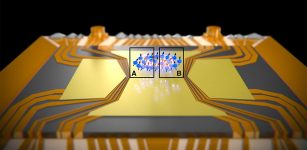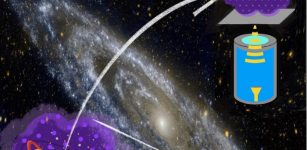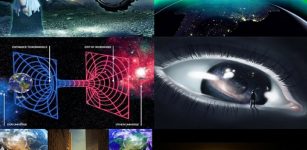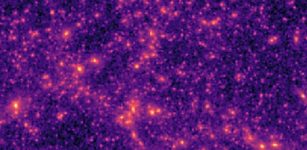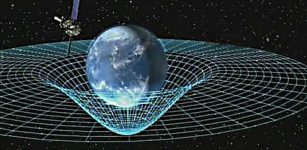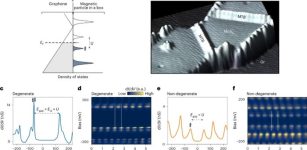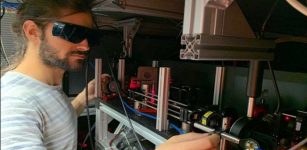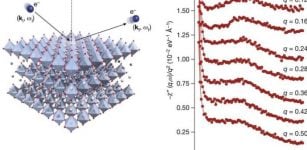Search For Dark Matter At Jülich
Eddie Gonzales Jr. – AncientPages.com – About 80 % of the matter in the universe consists of an unknown and invisible substance. This “dark matter” had already been postulated about 90 years ago. “
In their experiment, the JEDI scientists utilized a special feature of the Jülich particle accelerator COSY: the use of polarized beams. Forschungszentrum Jülich / Ralf-Uwe Limbach
This was the only way to reconcile the velocity distribution of visible matter within galaxies with existing knowledge,” explains Jörg Pretz, one of the study’s co-authors, who is also deputy director at Forschungszentrum Jülich’s Nuclear Physics Institute and professor at RWTH Aachen University.
“A ‘dark’ form of matter, previously unobserved, must additionally stabilize the galaxies.”
Physicists have been searching for this matter since the 1930s. Science has no shortage of theories, but no one has yet succeeded in actually detecting dark matter.
“This is because the nature of dark matter is still completely unclear,” says Dr. Volker Hejny, who is also from Jülich’s Nuclear Physics Institute and, like his colleague Jörg Pretz, is a member of the international JEDI collaboration that conducted the experiment. JEDI stands for Jülich Electric Dipole moment Investigations and scientists involved in the collaboration have been working on the measurement of the electric dipole moments of charged particles since 2011.
“Dark matter is not visible and has so far only revealed itself indirectly through its gravity. Its effect is comparatively tiny, which is why it only really becomes apparent in the case of enormously large masses – such as entire galaxies.”
Theoretical physicists have already proposed a number of hypothetical elementary particles that dark matter could be composed of.
Depending on the properties of these particles, various methods could be used to detect them – methods that do not require the highly complex detection of gravitational effects. These methods include axions and axion-like particles.
“Originally, axions were intended to solve a problem in the theory of the strong interaction of quantum chromodynamics,” explains Pretz. “The name axion can be traced back to the winner of the Nobel Prize in Physics, Frank Wilczek, and refers to a brand of detergent: the existence of the particles was supposed to ‘clean up’ the theory of physics, so to speak.”
To detect the axions, scientists in the JEDI collaboration used the spins of particles. “Spin is a unique property of quantum mechanics that makes particles behave like small bar magnets,” explains Hejny.
“This property is utilized, for example, in medical imaging for magnetic resonance imaging, or MRI for short. As part of this process, the spins of atomic nuclei are excited by strong external magnetic fields.”
MRI technology is also used to search for dark matter. While in normal MRI the atoms are at rest, in an accelerator the particles move almost at the speed of light. This makes the examinations in some areas much more sensitive and the measurements more accurate.
In their experiment, the JEDI scientists utilized a special feature of the Jülich particle accelerator COSY, namely the use of polarized beams. “In a conventional particle beam, the spins of the particles point in random directions,” says Pretz.
“In a polarized particle beam, however, the spins are aligned in one direction.” There are only a few accelerators worldwide that have this capability.
If, as the scientists suspect, a background field of axions surrounds us, then this would influence the motion of the spins – and could therefore ultimately be detected in the experiment.
However, the anticipated effect is tiny. The measurements are not yet accurate enough.
However, although the JEDI experiment has not yet found evidence for dark matter particles, the researchers have managed to further narrow down the possible interaction effect. And perhaps even more significant, they were able to establish a new and promising method in the search for dark matter.
Original publication: First Search for Axionlike Particles in a Storage Ring Using a Polarized Deuteron Beam, S. Karanth et al. (JEDI Collaboration), Phys. Rev. X 13, 031004 – Published 12 July 2023, DOI: 10.1103/PhysRevX.13.031004
Written by Eddie Gonzales Jr. – AncientPages.com – MessageToEagle.com Staff


